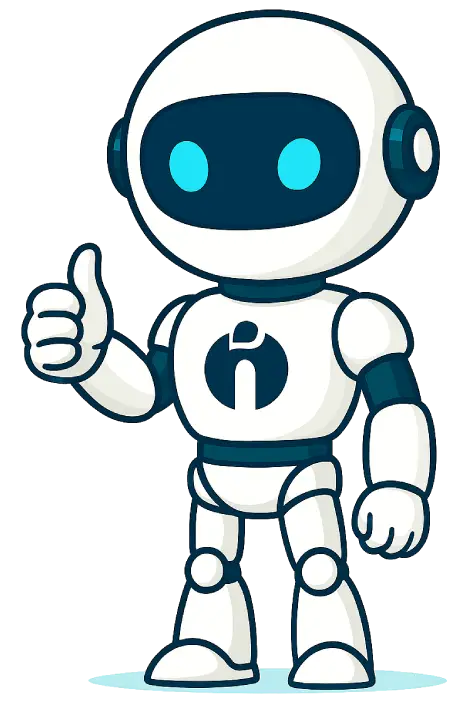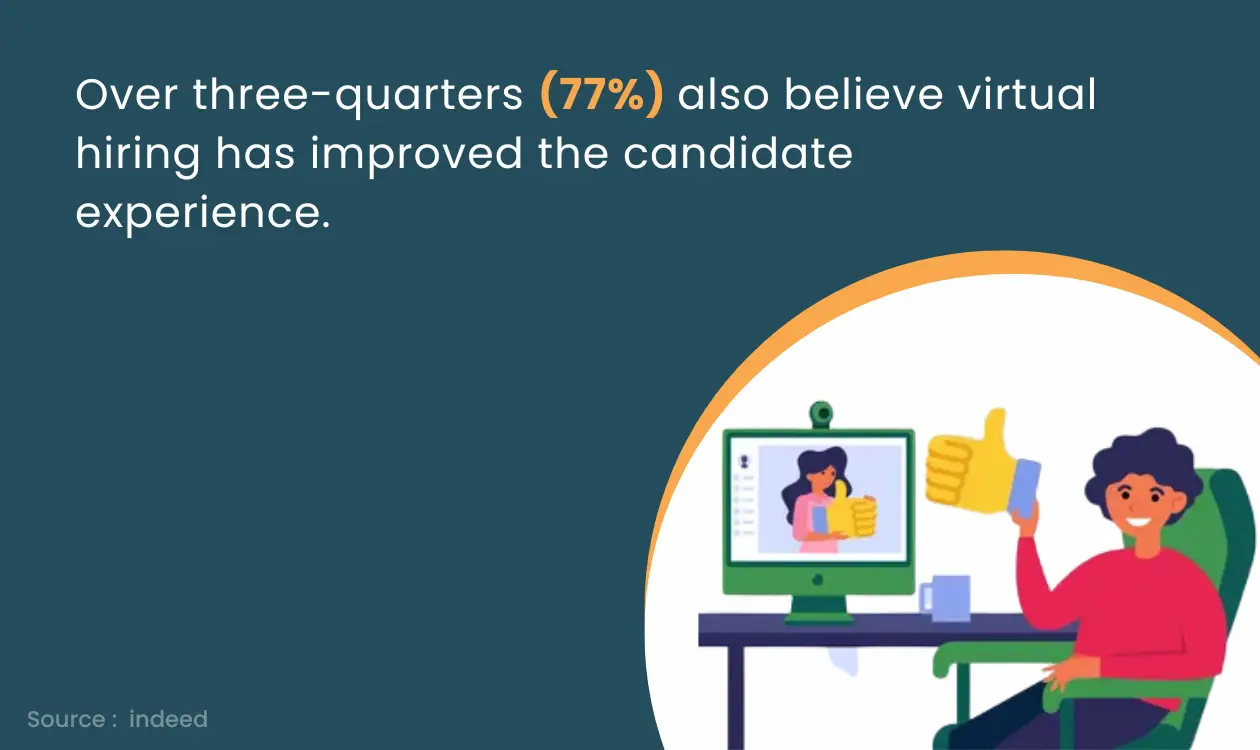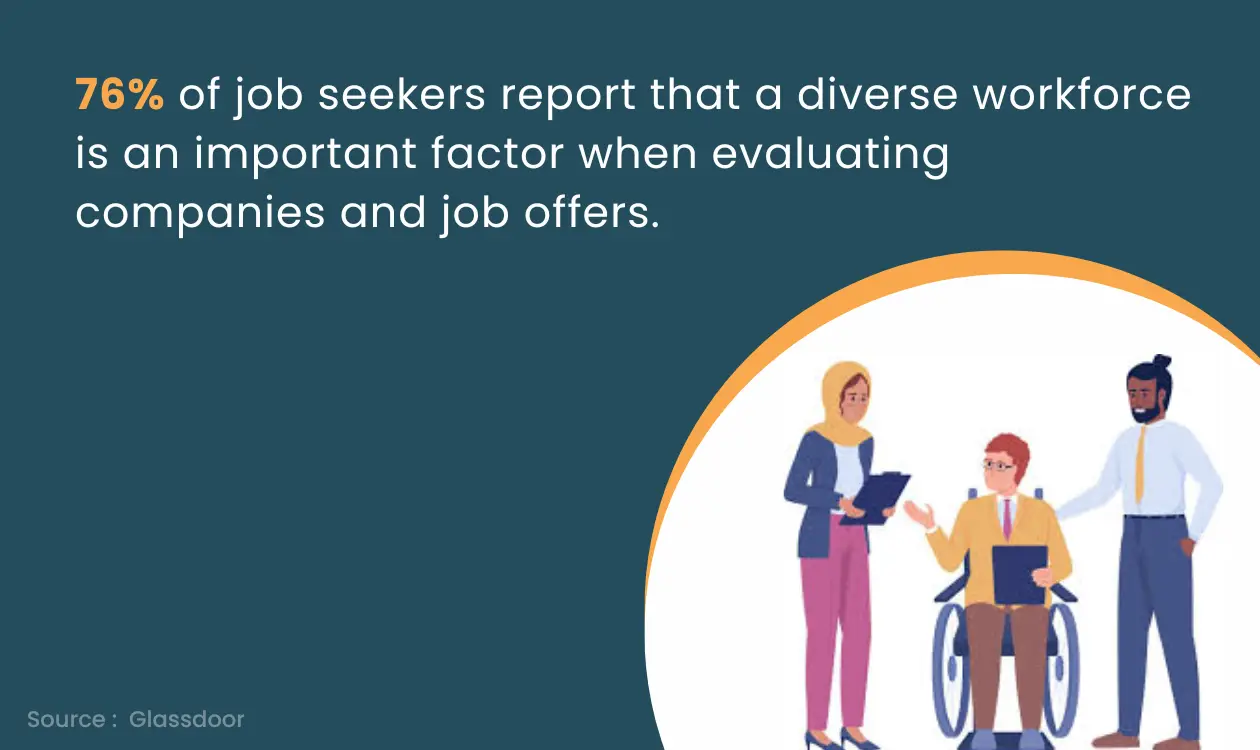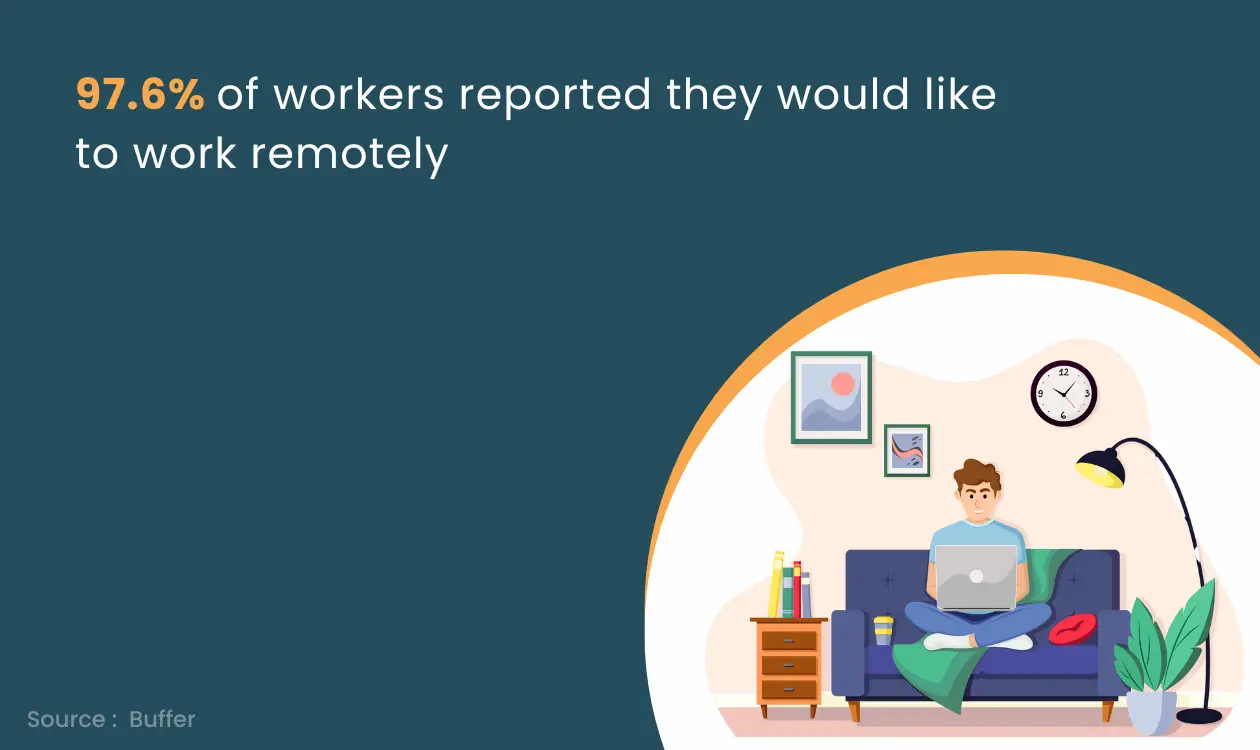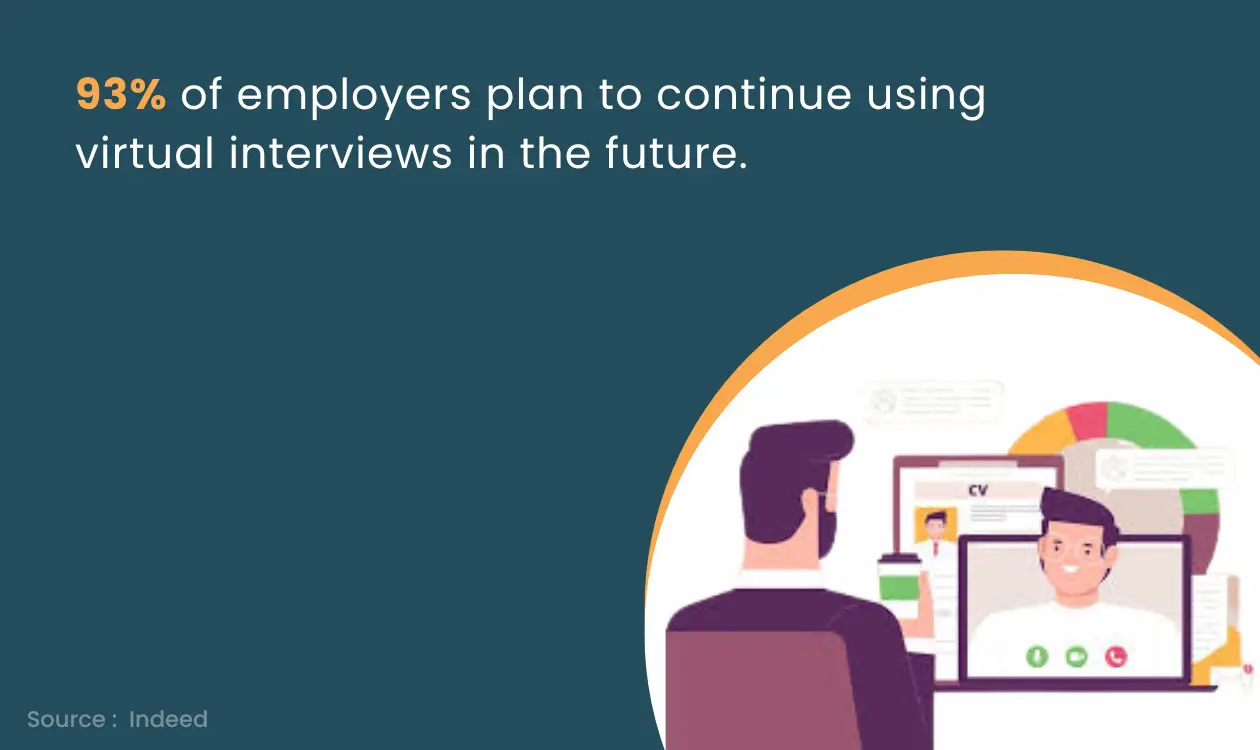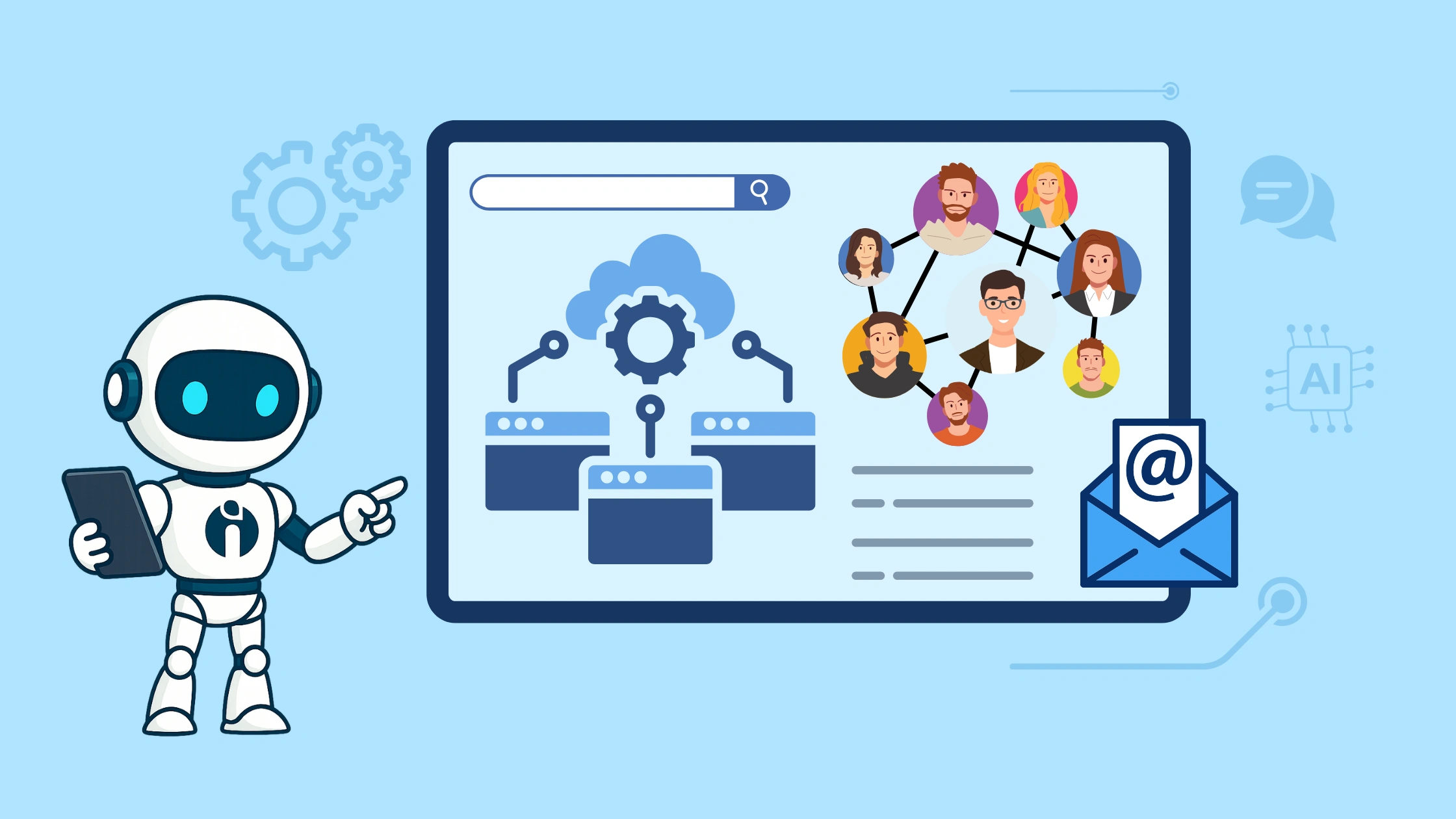TL;DR
- Remote recruitment enables accessing a global talent pool beyond geographical constraints, enhancing diversity and inclusion.
- It reduces time-to-hire and cost-per-hire by leveraging virtual interviews and online assessments, improving convenience and efficiency.
- Effective remote recruitment requires a strong employer brand, fair compensation, use of specialised tools, and clear remote work policies.
- Top remote employees are productive, communicative, organised, results-orientated, self-motivated, and adaptable.
At present, many organisations around the world have started and adopted this common standard of working from home. Also, it is true that talent drives the growth of the companies.
A large portion of a business’s success is attributed to onboarding the right candidates at the right time. With that said, remote recruitment can benefit your organisation because it brings in skills that are scarce in your area.
Pretty soon, remote working will become the norm.
However, hiring high-quality talent and virtual onboarding can be challenging, stressful, and confusing.
A report by Forbes mentioned that 74% of working professionals expected remote work to become the new normal.
So, are you one of those remote recruiters who plan to expand your team by acquiring remote workers?
Hiring remotely is not an easy task. But with proper planning and execution, it can be done effectively. Let’s understand how.
Definition of Remote Recruitment
Remote recruitment, which is also known as remote talent acquisition or online recruitment.
It means conducting entire recruitment process virtually without the need for physical presence.
This includes identifying, assessing, interviewing, and onboarding candidates through online platforms. The focus is on using hiring tools and platforms to streamline the hiring process. So, that geographical barriers do not limit the talent pool.
During remote recruitment, maintain the quality of the recruitment process and candidate experience.
Benefits of Remote Recruitment
Remote recruitment is like casting a wider net for talent. You can connect with a much larger pool of qualified candidates, regardless of their location.
Let’s explore the advantages of remote hiring in detail.
1. Reach the global talent pool
The remote recruitment process allows you to access broad and diverse talent from any corner of the world.
It not only reduces the cost but also decreases the geographical constraints. The hiring teams can find, attract and hire talent from different geographical locations.
2. Reduced Time-to-hire & cost-per-hire
Remote recruitment saves time by eliminating travel arrangements and adjusting schedules. This makes the process more convenient for you and candidates. You can efficiently conduct virtual interviews using video conferencing tools.
Also, remote recruitment can greatly reduce hiring costs compared to traditional methods. Recruiters and hiring managers save money by not needing to travel for in-person interviews.
Video interviews and online assessments remove the necessity for physical infrastructure and resources.
In addition, online interviews reduce stress and financial burdens on candidates. This helps them focus better on showcasing their technical skills and qualifications.
3. Enhanced diversity and inclusion
Remote recruitment can improve diversity and inclusion by removing geographical limits. This allows access to a wider range of candidates.
Also, it allows companies to assess candidates from different backgrounds, cultures, and locations. This leads to fostering a more diverse workforce.
Remote recruitment destroys hiring biases arising from physical interviews or in-person interaction. So, you can concentrate only on candidates' qualifications and skills. This makes the hiring process more fair and inclusive.
4. Flexibility and Convenience
Remote recruitment offers flexibility and convenience for hiring managers and candidates.
Due to remote recruitment, you can easily schedule interviews at times suitable for both time zones.
On the other hand, applicants can join the interviews from the comfort of their homes, avoiding the hassle of travel and accommodation. Which will enhance the overall interview experience.
It helps you to adapt to unexpected situations such as travel bans, pandemics, and natural disasters. So, you can keep hiring even when people can't travel or work in person.
Tools and Technologies for Remote Recruitment
Having the right tools in place when acquiring new talent can help reduce the risk of misfiring, turnover, and bad employer branding. Here are the tools you absolutely need for recruitment.
-
For Sourcing Remote Candidates
Software like Nixa.io, Remotive.io, and RemoteOK.io are remote job platforms that allow you to search for qualified remote employees. With millions of workers on these platforms, you’re sure to find someone.
-
For Assessing Remote Candidates
Imocha, HackerRank, and Berke Assessment are platforms with several remote skill tests available.
GoodHire is a pre-employment background screening company that can integrate with your Applicant Tracking System (ATS) and other tools.
-
For Talent Operations
iSmartRecruit is an Applicant Tracking System (ATS) that scans resumes to decrease time spent in the recruitment process. Beamery is a talent operating system meant to attract, engage, and retain talent, which improves your hiring process.
-
For Interviewing
ScreenhingHive allows you to view recorded interviews and compare them.
Jobma screens candidates by letting you share interview questions candidates can answer in their own time.
HireVue helps candidates self-schedule their interviews.
-
Managing Remote Teams
With remote work becoming common, managers need a simple way to share workflow processes with remote employees.
Visme provides an all-in-one tool to create an employee handbook that you can easily customise and update.
-
For Assessing Culture Fit
Humans employ AI to help remove bias from the hiring process that may occur due to cultural differences. Saberr predicts how well candidates can fit into a role.
ThriveMap identifies how candidates like to work.
-
For Onboarding
Workday and Personio are HR and finance management software that helps you build better onboarding policies.
Deel is a company designed for distributed teams that takes care of local compliance for remote employees.
-
For Recruitment From Start to Finish
iSmartRecruit is an All-in-one Recruitment Software for teams. You’ll also find many useful tools and informational resources, such as on how to create a solid recruitment plan. Without software, you’re going to have a hard time connecting with remote talent.
But there’s just one problem: how can you tell the difference between a good and a great remote worker?
What Makes a Great Remote Employee?
At first glance, remote employees may seem identical to their in-office counterparts, but there are subtle differences you need to account for. Here’s what makes a great remote employee.
-
High Level of Productivity
Remote workers are generally more productive, but not everyone will meet deadlines. Look for workers with a good track record of productivity or who are highly motivated and trustworthy. -
Excellent Communicator
Great communication is the backbone of remote work. Remote candidates must be comfortable using tools like Zoom, Slack, Teams, and project management software. They also must show up to meetings on time. -
Incredibly Organized
Remote workers need good organisational skills to handle their projects well. Employers should provide a dependable, well-structured, cloud-based filing system to help them. -
Results-Orientated
Remote workers can’t just “look busy”; they have to show up each and every day. Employers can truly focus on the skill and talent of an individual to ensure that they provide unique value to the company. -
Self-Starter/Motivated
Goal setting improves worker performance by 12-15%. If your candidates can set solid objectives, you’ve just found an incredibly motivated worker. Employers can also set clear goals for their remote workers to help them thrive. -
Adaptable and Flexible
Your remote employees need to be able to roll with the punches, take criticism with a grain of salt, and learn on the fly. In other words, your candidates must adapt to new tech, methods, and processes quickly.
How to Attract, Hire, and Onboard the Right Remote Talent
Finding the best remote employees isn’t a numbers game; it’s about creating a deliberate acquisition strategy.
Here’s how you can find the right remote employees for your business.
Step 1 - Build a Strong Employer Brand
Local candidates are easier to reach. They've probably heard about your brand and company, and they may even know your employees and interviewing process.
But your remote candidates won’t know a thing about you, which means they’ll rely on your online/digital presence.
For this reason, your brand should illustrate that you’re trustworthy, transparent, flexible, and accommodating.
To do this, put the following information on your career pages:
How and When You Work
Remote employees prefer to make their own schedule, but if they have specific obligations (meetings) where they must appear at a certain time, describe them in detail. Give your employees a glimpse of a typical workday.
Employee Testimonials
Unless your employees are working directly with the CEO, they aren’t going to care how their employer feels about the company. Ask your other remote employees to make a testimonial instead, as it feels more authentic. Also, it can be a vital asset for your recruitment marketing efforts.
It’s vital to be open about your company culture, but you also have to live it. If you promote diversity, but your content only shows pictures of white men, they aren’t going to believe you. Promote your culture everywhere at all times.
In-Person Meetings
If your company has in-person meetings for local or international staff members, show them off. Be clear that off-site trips aren’t mandatory (if they aren’t), or you could add off-site all-expenses-paid trips as one of the perks of the job.
Creating a great employer brand is the hardest part of talent acquisition, but it’s unlikely that offers will roll in based on your company culture alone. You’ll still need to advertise.
We already gave you a few great sites like RemoteOK.io, but there are several others you can try. FlexJobs, We Work Remotely, and Working Nomads are also great sites. For social media, try Work From and Nomad List on Slack or Digital Nomad Jobs on Facebook.
Step 2 - Offer Fair Compensation and Benefits
By offering fair compensation and benefits, you won’t just attract employees; you’ll also retain them. Keep in mind that a fair wage can change based on where a person lives. If your remote employee is in a place where things cost more, it's only right to pay them more.
Benefits like professional development, vacation plans, health and life insurance, and access to coworking spaces are universally loved by remote workers. Perks, like a home office stipend, are often sought after by employees who have recently switched to remote work.
Step 3 - Seek Experience, Soft Skills, and Recorded Videos
If you’re using ATS software (and you should because remote positions receive more applications), you may be tempted to focus only on experience and employment length.
While experience is crucial, soft skills are often a better performance indicator. Freelancers are used to hopping around a lot, and it isn’t an indicator of poor work ethic. But how can you assess soft skills at the applicant stage?
Employers can ask for a recorded video that includes a short introduction and a few other details. Not only will the video show off soft skills like communication and teamwork, but it also highlights the serious applicants.
Step 4 - Ask For Referrals (Especially for Portfolio Applicants)
Remember that your remote employees often work freelance, so you need to judge your applicants based on quality, not quantity. Ask for referrals from your applicant’s previous clients. If they enjoyed working with your candidates, that’s a good sign they’re quality workers.
Step 5 - Host a Virtual Interview With Small Talk
When hiring remote employees, video and phone interviews will be your primary communication channels. It’s also important to use assessment tools, like Imocha and HackerRank, to evaluate the candidates’ skills. These tests will help you make more objective hiring decisions.
You should use interview and culture fit tools during this process, but the actual interview should take place on video conferencing software in real time. Platforms like Zoom allow you to assess tone, body language, and eye contact without needing to be in the same room, city, or country.
Step 6 - Hire and Train Employees in Groups
One of the most efficient ways to hire and train employees is in groups. A group hire can add healthy competition, cross-training opportunities, and reduced costs. If you’re only hiring one remote employee at the moment, consider waiting for another hire to save time and money.
Step 7 - Set Clear Guidelines and Policies for Remote Work
Employers often don’t clearly explain what they want from remote workers. Your new employees may understand what their deadlines are, but if they aren’t sure how to deliver their work, they won’t give you what you want.
Even if you made an outline of the scope of their employment (work hours, process, response time, culture, etc.) during the acquiring and interviewing process, they’d need a refresher.
Even if you explained their job details (work hours, tasks, response times, company culture, etc.) during hiring, they would need a reminder. Your candidate has likely been through a series of interviews and tests, and they may mix you up.
Step 8 - Build a Long-Lasting Work Relationship
In remote work, where you don't meet in person, it can be tough to create strong bonds with your team members. However, you can still establish good relationships with them by using communication tools like Slack.
Future Trends in Remote Recruitment
Remote recruitment is constantly evolving and improving. In the future, we can expect to see new trends that will significantly change the way we hire remote workers.
Here are some of the key trends one can expect in the near future.
1. Virtual Reality (VR) and Augmented Reality (AR)
VR and AR will offer immersive experiences to candidates and transform remote recruitment.
With VR, companies can offer virtual tours of their offices, giving candidates a sense of the company culture and environment.
As a result, it will enhance candidate engagement and provide a more accurate assessment of their abilities. Plus, it will help applicants imagine themselves working for the company.
2. Embracing hybrid work models
Hybrid work models are a mix of working from home and working in an office. They let employees do their jobs from both places.
More and more companies have started using hybrid models to provide flexibility to employees. At the same time, maintaining aspects of in-person collaboration.
In order to fit with the combination of in-office and remote work, remote recruitment will have to make some changes. These include:
-
Modifying the hiring process: Make suitable for both remote and in-office candidates.
-
Adjusting onboarding procedures: New employees, whether they work from home or in the office, need to have a smooth onboarding.
-
Re-thinking employee engagement strategies: Keep all employees involved and motivated regardless of location.
You might have to find people who can do well in a hybrid work setup, which is a mix of office and remote work. You'll need to check their communication skills, self-motivation, and ability to work well with others, even if they're not in the same place.
3. AI in candidate sourcing and searching
Nowadays, AI is playing a key role in automating industries, and the remote recruitment landscape is no exception. AI algorithms can analyse candidate resumes and applications to find qualified applicants.
AI-based screening and sourcing tools will streamline the hiring workflow in the initial stages and save time for you.
4. More data-driven hiring decisions
The usage of data insights and recruitment analytics in remote hiring will increase. This will help them make better data-driven recruitment decisions.
Important recruitment KPIs data, including applicant performance metrics, evaluation, and interview feedback, will be analysed to detect patterns, predict success, and enhance the overall recruitment process.
5. Virtual career fairs and hiring events
In the future, it will be common to have job fairs and recruitment events online. This way, you can connect with a wider talent pool of applicants from anywhere, not just from one place.
These events offer convenience and cost-effectiveness for both parties. Job seekers can attend from anywhere, eliminating the need for travel, and employers can reach a wider pool of candidates.
Also, organisations can showcase the company culture while advertising open positions at events.
Final Thought on Remote Recruitment
In the vast ocean of talent, remote recruitment is our compass, guiding us to the right shores.
It's not just a trend but a transformative shift in the way we discover and onboard exceptional individuals.
As we've navigated through this guide, we've seen how remote recruitment can broaden our horizons and bring diversity to our teams.
But the journey doesn't end here. How will you adapt your recruitment strategies to this new landscape? How will you ensure that your remote recruitment process is as effective as it is inclusive?
Embrace the challenge, for the future of recruitment is not just remote; it's here. With iSmartRecruit, make your remote recruitment easier. Get a demo today and see how it revolutionises remote recruitment.
FAQs - Frequently Asked Questions
What is remote recruitment?
Remote recruitment is the process of hiring candidates entirely online, from sourcing to onboarding, without any physical presence. It broadens your talent pool by removing geographical barriers and allows for flexible and efficient hiring.
How can iSmartRecruit help with remote hiring?
iSmartRecruit offers an all-in-one recruitment software that streamlines the hiring process. It helps you manage applications, schedule interviews, and onboard candidates easily, making remote recruitment less stressful and more efficient.
What are the main benefits of remote recruitment?
The benefits include accessing a global talent pool, reducing time and cost-to-hire, enhancing diversity and inclusion, and adding flexibility and convenience for both recruiters and candidates.
How do I assess soft skills in remote candidates?
You can ask candidates to submit recorded video introductions to evaluate communication and teamwork skills. Using culture fit tools and virtual interviews helps ensure you select motivated and adaptable remote workers.

